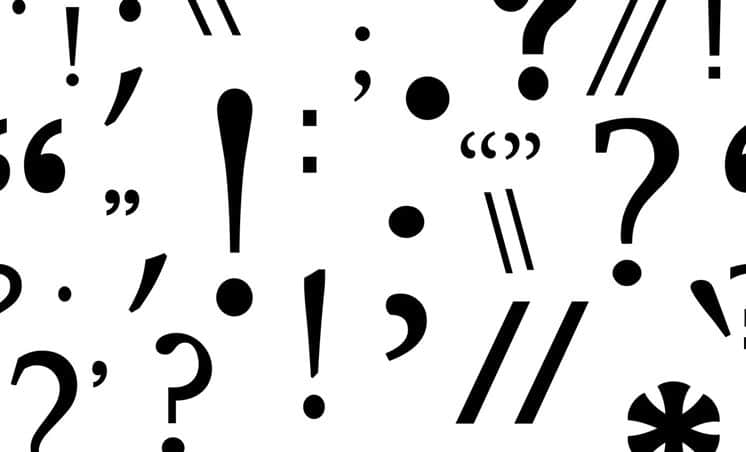
There seems to be a widely held belief that English, in common with the British who speak it, is a very formal language. In my experience, English does not seem any more or less formal than other languages.
All cultures seem to have concepts of formality, what can be confusing is that these concepts differ from culture to culture.
- What is appropriacy and how is it shown in English?
- Why is appropriacy important?
- What problems do learners have with appropriacy?
- How can we help learners develop a sensitivity to appropriacy?
- Conclusion
What is appropriacy and how is it shown in English?
Perhaps the first thing to clarify is that I prefer the word appropriacy to register. This is because the term register is used to describe lexis that is exclusive to a particular area of use, often professional, such as medicine. I will, therefore, to avoid confusion, refer to whether language is appropriate. I also prefer this term since so much depends upon context and whether language is appropriate to that context. So what makes language appropriate for a context?
Basically appropriacy depends upon what you say and how you say it. In other words upon your choice of words and the way you then produce those words, which in spoken language is largely dependent on pronunciation and paralinguistics (body language).
What you say and how you say it will in turn be governed by the situation and who you are talking to. Bygate (1987) used the term ‘reciprocity conditions’ to describe how these features affect language production. An example might be the use of the exclamation «Shut up!». Most of us might tell a friend to «Shut up!» in a friendly informal way when chatting in a pub. We could mean «I don’t believe you.» and would probably be laughing and use high pitched falling intonation. If we were not smiling and used rising intonation the message would be very different and inappropriate. We would be less likely to use the same words in a friendly way to the same person at a formal dinner because the other people present might misinterpret our meaning and think we were being rude. We would not tell a stranger or someone we are not on very familiar terms with to «Shut up!» under any normal circumstances (we would of course if we positively wanted to be rude or perhaps if we thought their talking was rude).
This consideration for the listener is reflected in the three maxims Robin Lakoff (1973) put forward:
- Don’t impose
- Give options
- Make your receiver feel good
Why is appropriacy important?
Brown and Yule (1983) suggested that much language use aims at ‘interaction’, by which they mean using language to create, preserve and develop social relationships. If the speaker is not appropriate this aim will not be achieved. Rudeness, deliberate or not, causes social relationships to break down.
What problems do learners have with appropriacy?
What makes this so difficult for a learner of English is that so much of the necessary sensitivity to appropriacy is culturally specific and acquired in childhood. It is also always changing – some examples of what is considered appropriate language now (for example the use of «Shut up!» explored above) would have been thought completely inappropriate as little as 40 years ago, perhaps even more recently.
In addition, due to the subconscious manner in which this awareness of appropriacy is acquired, native speakers may not make allowances for its absence when non-native speakers speak or write. A good example is the case of intonation where a speaker may be misinterpreted as being rude or bored completely unfairly because their intonation is too flat.
Another cause of problems here can be employing what is acceptable in your L1 when speaking another language. In Spain it is uncommon to say «por favor» (please) when ordering a drink in a bar; so long as you smile, it is unnecessary. This is not the casein the UK. Similarly in Czech I could ask «Nemate chleb?» in a shop but if I directly translated this into «Don’t you have bread?» in Britain, I could be in trouble.
Finally to make things more complex there is the difference between appropriacy in spoken and written language. This distinction exists in most languages as far as I am aware but nevertheless adds further complications. The arrival of texting and email has blurred this distinction to some extent but at the same time has increased the amount of awareness necessary.
How can we help learners develop a sensitivity to appropriacy?
In this final section I will suggest a few ideas for helping students become more sensitive to appropriacy in English, both as producers of and receivers of language.
General strategies
- Teach functions
Most of the distinctions between what is and isn’t appropriate can be most easily demonstrated through teaching functional ‘social’ language (e.g. making requests). When teaching functions be sure to focus on the context in which you would use particular functions and with whom you would use them.
- Teach neutral exponents first
Most learners will be safe and able to function if they can use neutral language appropriately, so I teach this first. For example, «Can you tell me the time, please?» is more generally applicable than «Would you mind telling me the time, please?» or «What’s the time?».
- Practise transformation
Practise transforming language from formal to neutral to informal etc. My students find this fun and interesting and it is a good way of raising awareness of different possibilities within the same context.
Strategies to raise sensitivity to recognition
- Listening for inference
I often ask students to listen and decide «What is the relationship between the speakers?» or «Where are they speaking?» etc. as a first listening task as it makes them aware of the importance of these considerations.
- Exploiting tapescripts
As a post-listening activity, I ask learners to search through tapescripts looking for language that shows the appropriacy of the text.
- Video
I use video with the sound off to raise awareness of paralinguistics clues.
Strategies to help with appropriate production
- Drilling
Pronunciation is central to appropriacy and so I try to drill good models with differing intonation and stress.
- Practising in a variety of contexts
Very little language is context specific (we don’t only use the 2nd conditional to talk about winning the lottery – when we use it at all) so I give my learners practice using structures / functions / lexis in lots of different situations.
- Including degrees of appropriacy in spoken practice
In spoken practice activities I sometimes add on an aspect of different degrees of appropriacy. For example, I give students roles such as ‘teacher’ or ‘older stranger’ or ‘best friend’, which means they will have to use different language depending on who they are talking to.
- Writing dialogues
For a variety of reasons I often ask students to write spoken language. One task I use is to ask groups to write the same dialogue (e.g. asking for directions) but assign a different degree of appropriacy to each group. The groups then perform their dialogues for the class and the listeners have to guess how appropriate they are being.
SOURCE:
https://www.teachingenglish.org.uk/article/register-degrees-formality









